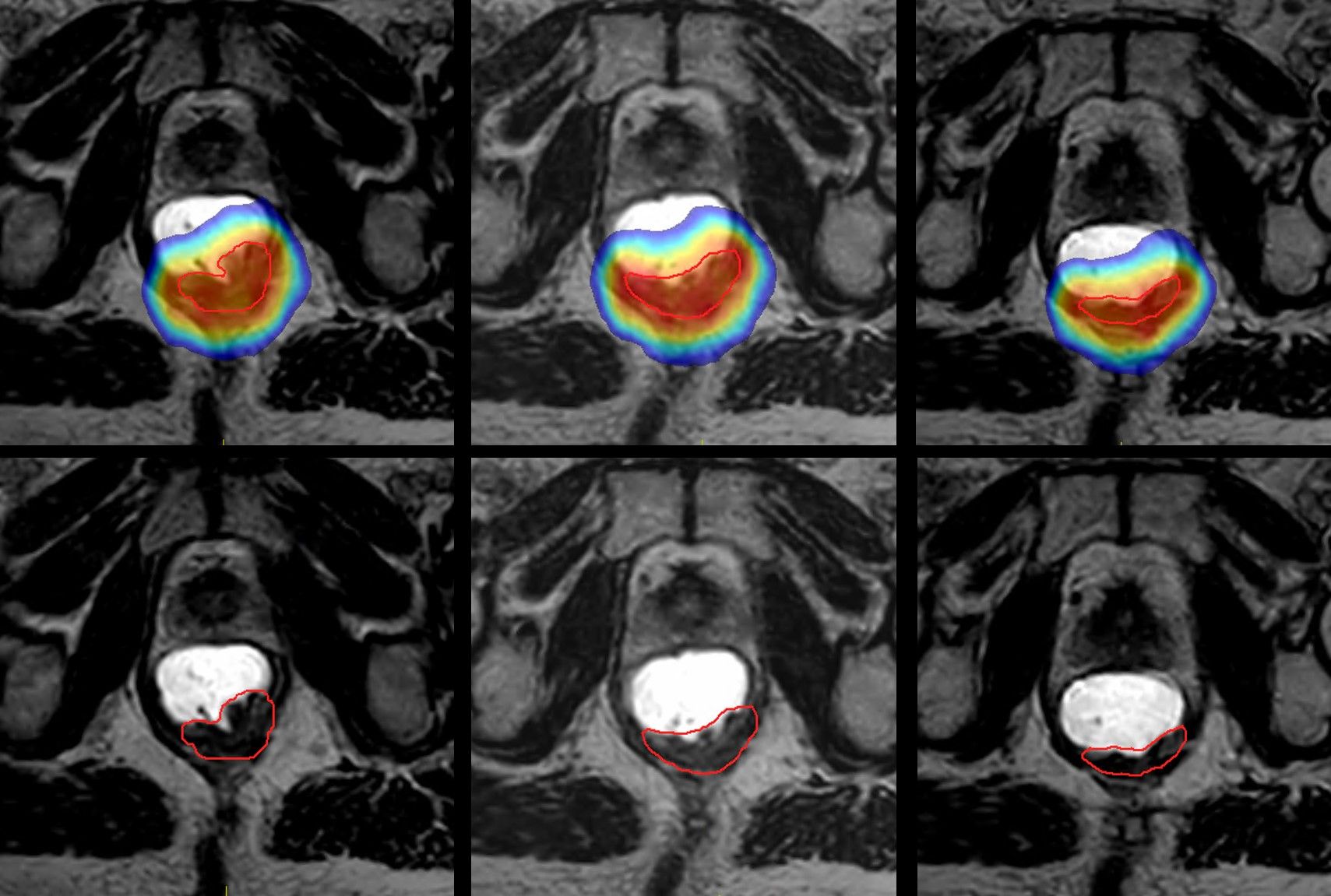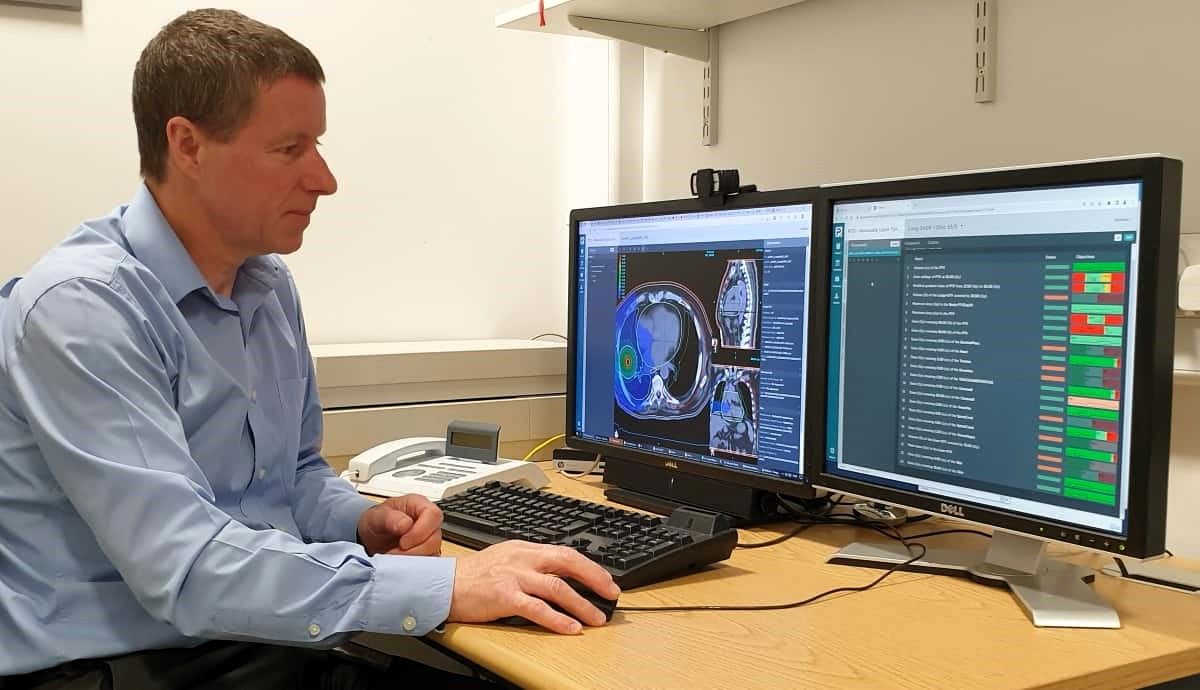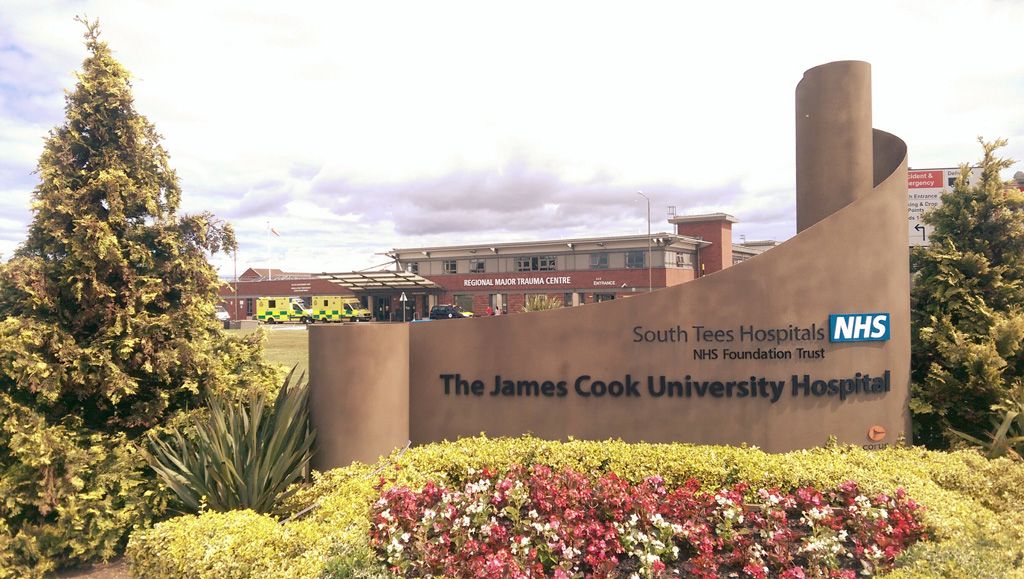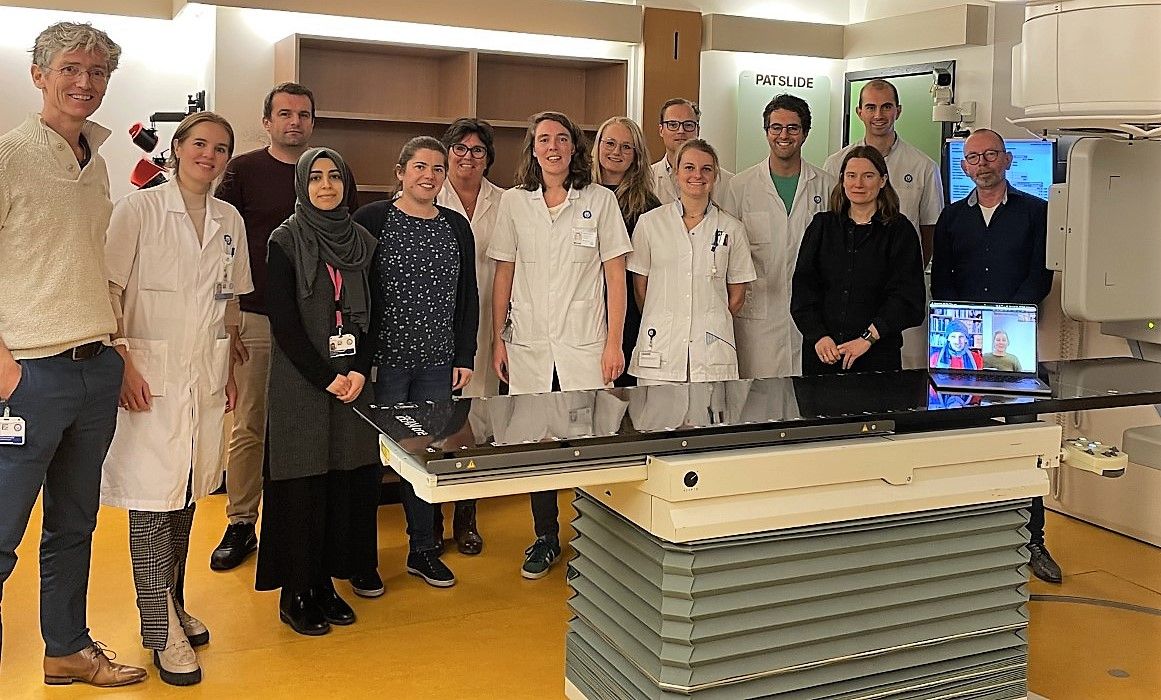Low-dose radiotherapy an attractive pain relief option for millions with non-cancerous diseases
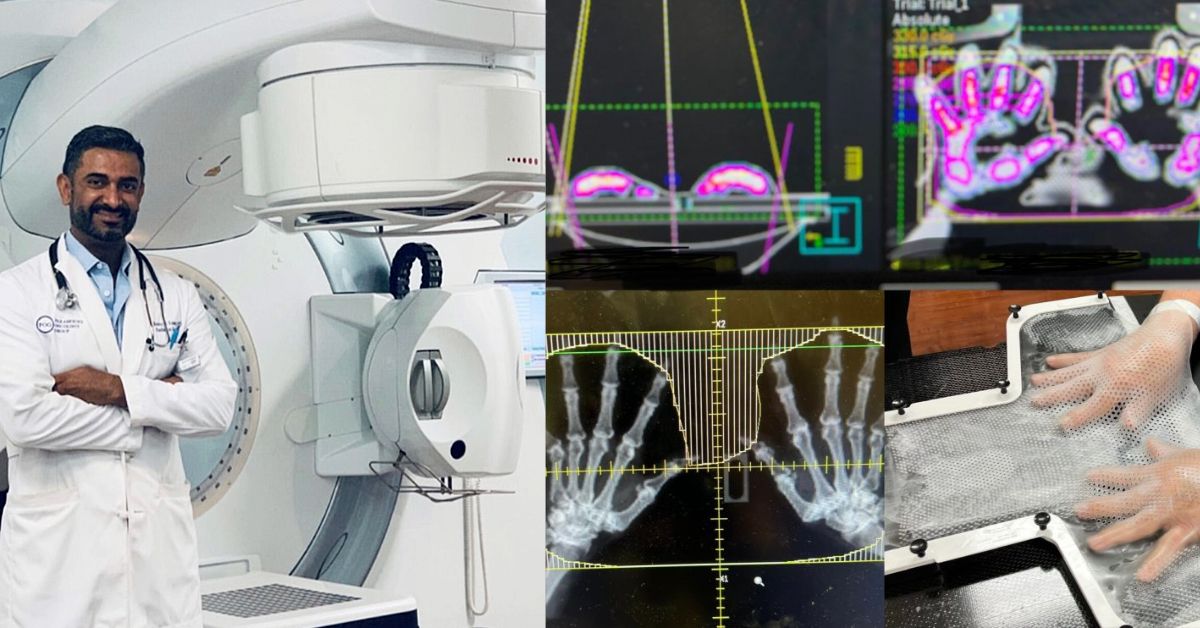
People with osteoarthritis a top patient group benefiting from low-dose RT at Illinois cancer center
A recent comprehensive review1 of the use of low-dose radiation therapy (LDRT) for treating osteoarthritis sparked radiation oncologist Dr. Bobby Koneru’s curiosity about the treatment modality. He was intrigued enough that today – just a year after reading the article – Dr. Koneru uses LDRT to treat one in five of his patients to address the pain and mobility issues of osteoarthritis and other benign conditions.
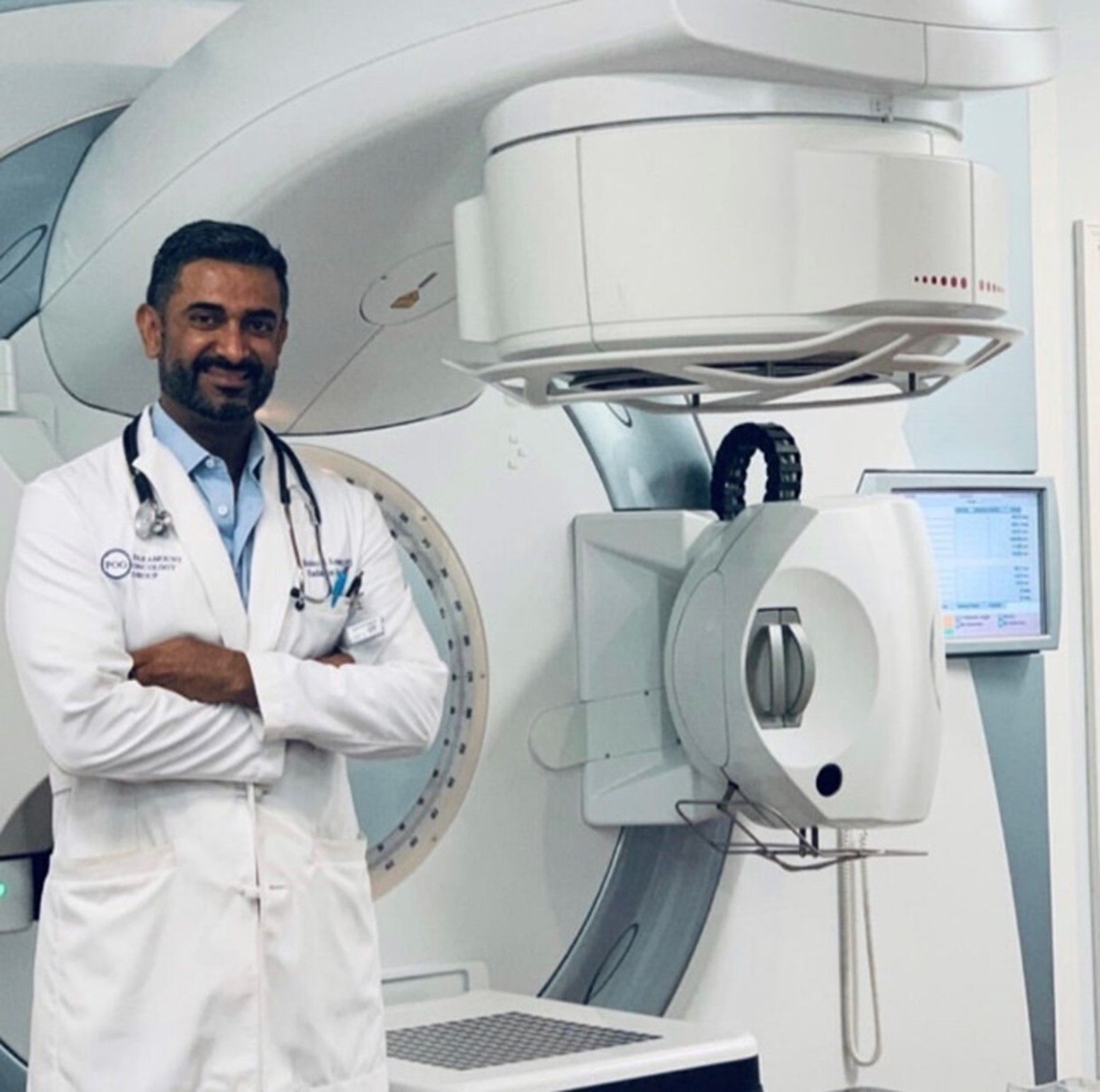
“Adding benign disease as a radiotherapy indication has transformed my practice into a really busy clinic – it has significantly increased our productivity.”
“Adding benign disease as a radiotherapy indication has transformed my practice into a really busy clinic – it has significantly increased our productivity,” says Dr. Koneru, who works at the Leonard C. Ferguson Cancer Center at FHN Memorial Hospital in Freeport, Illinois.
“Osteoarthritis, in particular, affects over 32 million Americans – twice the incidence of cancer – and is the fastest increasing health condition and the second leading cause of disability in the United States.”
Although the outcomes of Dr. Koneru’s patients (> 80 in total) have been remarkable, the use of LDRT for benign diseases has been viewed with circumspection among U.S. healthcare providers in general.
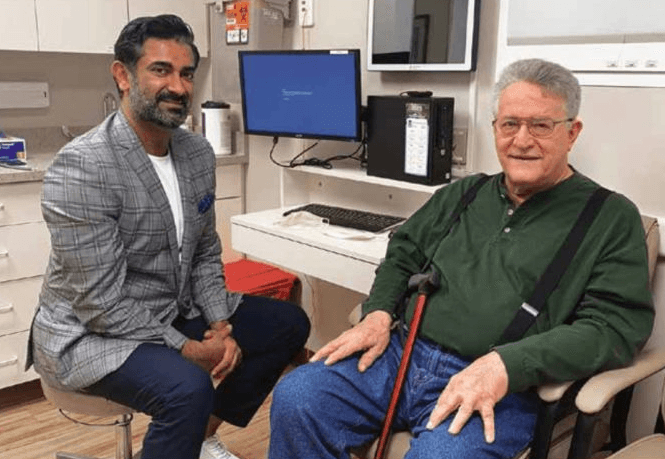
“There are several factors for this,” he says, “including the risk of radiation-induced side effects, the risk of causing a secondary cancer, and the availability of alternative interventions, such as medication, surgery or other non-ionizing modalities. In addition, the use of LDRT for benign diseases is generally guided by clinical evidence, which is still limited.”
Dr. Koneru adds that oncologists and radiation therapists are primarily trained to use radiation therapy to treat cancer, which could influence the mindset and practices within the radiotherapy arena.
Regarding radiation-induced side effects and secondary cancers, in particular, LDRT results in few to no acute side effects.1-3 And in terms of long-term side effects, he observes that there is always a theoretical risk of secondary malignancy, but that the actual risk is often considered low, especially with LDRT.
“In the past 40 years of German experience using LDRT for osteoarthritis, there has not been a single case of secondary cancer reported.”
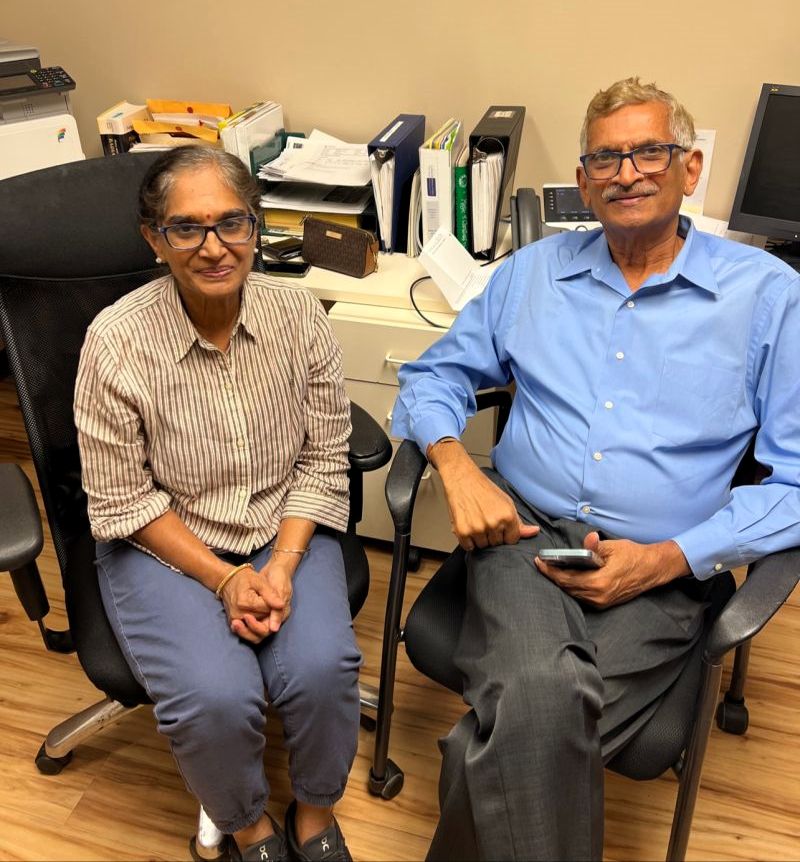
“In the past 40 years of German experience using LDRT for osteoarthritis, there has not been a single case of secondary cancer reported,”1-2 Dr. Koneru notes.
What is Low-dose radiation therapy and how does it work?
LDRT delivers less than 0.5 Gy to 1.0 Gy per fraction, with a total dose of 2-6 Gy over six fractions. Dr. Koneru plans cases with CT simulation just as in cancer radiotherapy cases and treats with his Elekta linear accelerator. In addition to osteoarthritis, other benign indications he has treated include Dupuytren’s contracture, lymphatic fistulas, keloids and plantar fasciitis, most referrals coming from the patient’s primary caregiver, in addition to many self-referrals. For patients with osteoarthritis, Dr. Koneru’s top indication, the target volume is the affected joint spaces.
“The therapeutic mechanism of LDRT is a complex and multifaceted process and is not fully understood,” he says. “However, it appears that LDRT has both immunomodulatory and anti-inflammatory effects, which influence the balance between pro-inflammatory and anti-inflammatory responses. This potentially leads to enhanced immune surveillance and the destruction of abnormal or damaged cells. The anticipated end result is pain relief.”
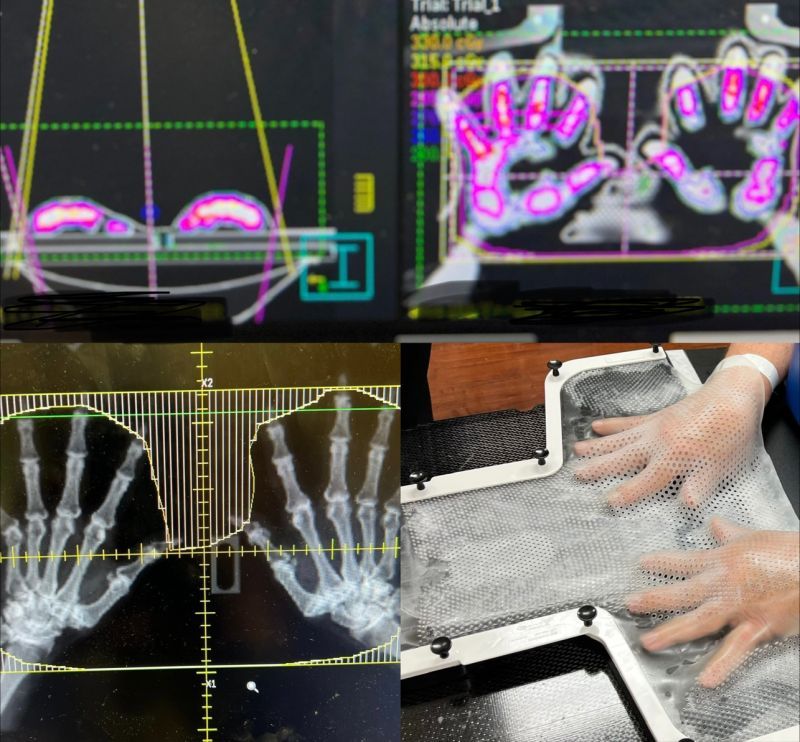
LDRT catches patients early in their disease
To select which patients might benefit from LDRT, Dr. Koneru meets with a patient presenting with joint pain and evaluates how severe the disease is using X-ray. Most eligible patients will have early-stage osteoarthritis; those with grade 4, (advanced) bone-on-bone osteoarthritis of the knee, for example, will likely not benefit from LDRT.
Patients who receive LDRT will usually notice the beginning of pain relief within days of starting treatment, with maximum relief in a few weeks.
“Sixty to 80 percent of patients will respond after one course and I will reevaluate the patient after another eight weeks.”
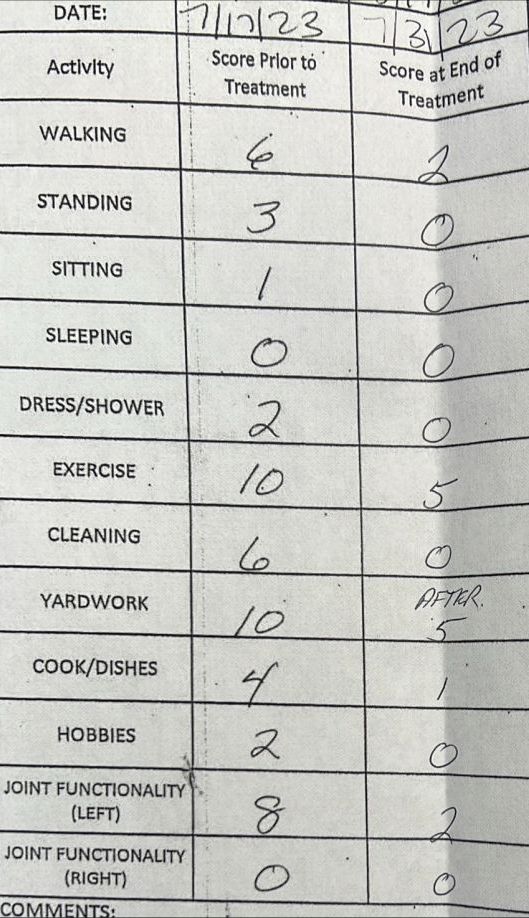
“Eight weeks post-treatment, we’ll call the patient back and compare the pre- and post-treatment pain scores,” he explains. “If there is a complete response, the patient will require no further therapy until or unless disease symptoms return. If there is a partial response, I will repeat the same LDRT course. Sixty to 80 percent of patients will respond after one course and I will reevaluate the patient after another eight weeks.”
Dr. Koneru adds that if there is no response at all after the first round, he will offer a second LDRT course with a higher dose; instead of 0.5 Gy for six fractions, he will use 1.0 Gy times six. He emphasizes that LDRT is not a cure for osteoarthritis, rather the goal is to buy patients time before many must undergo surgery
“While some patients can’t have surgery, we can at least provide them with some pain relief, hopefully with some good durability,” he says. “LDRT is a more desirable option than medications in many cases. If a patient is on them chronically there is the potential for significant side effects. For example, if a patient is taking NSAIDS and ibuprofen three to five times a day for years there is a higher risk for gastric ulcers and bleeds.
“But with LDRT, we can offer a treatment that has virtually no side effects and that will get the patient off of medications and potentially delay surgery.”
Click here for more accounts of Dr. Koneru’s ongoing LDRT experience.
References
- Dove APH, Cmelak A, Darrow K, et al. The Use of Low-Dose Radiation Therapy in Osteoarthritis: A Review. Int J Radiat Oncol Biol Phys. 2022 Oct 1;114(2):203-220. doi: 10.1016/j.ijrobp.2022.04.029. Epub 2022 Apr 30. PMID: 35504501.
- Mücke, Seegenschmiedt, & Micke. (n.d.). Fachgruppenspezifische evidenzbasierte s 2e-Leitlinie der ... - degro. Available at: https://www.degro.org/wp-content/uploads/2018/11/S2-Leitlinie-Strahlentherapie-gutartiger-Erkrankungen-update-2018-Endversion.pdf. Accessed January 8, 2022.
- Donaubauer A-J, Zhou J-G, Ott OJ, et al. Low dose radiation therapy, particularly with 0.5 Gy, improves pain in degenerative joint disease of the fingers: Results of a retrospective analysis. Int J Mol Sci 2020;21:E5854.
LAROX240214
